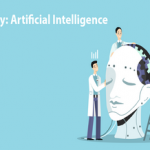Behavior Driven Development (BDD)
A software development methodology in which an application is specified and designed by describing how its behavior should appear to an outside observer. BDD combines the general techniques and principles of test-driven development (TDD) with ideas from domain-driven design and object-oriented analysis and design to provide software development and management teams with shared tools and a shared process to collaborate on software development. BDD offers the ability to enlarge the pool of input and feedback to include business stakeholders and end-users who may have little software development knowledge. Because of this expanded feedback loop, BDD works well in continuous integration and continuous delivery environments.
Source: https://magazine.logigear.com/glossary/software-testing-master-glossary/#letter-B
Continuous Testing (CT)
Continuous testing was originally proposed as a way of reducing waiting time for feedback to developers by introducing development environment-triggered tests as well as the more traditional developer/tester-triggered tests. Continuous testing is the process of executing automated tests as part of the software delivery pipeline to obtain immediate feedback on the business risks associated with a software release candidate. For Continuous Testing, the scope of testing extends from validating bottom-up requirements or user stories to assessing the system requirements associated with overarching business goals.
Source: https://en.wikipedia.org/wiki/Continuous_testing
DevOps
A software development practice, grounded in agile philosophy that emphasizes close collaboration between an organization’s software developers and other IT professionals while automating the process of software delivery and infrastructure changes. It aims at establishing a culture and organizational workflow in which building, testing, and releasing software happens rapidly, frequently, and more reliably.
The term derived from the words “Development” and “Operations”.
Source: https://magazine.logigear.com/glossary/software-testing-master-glossary/#letter-D
Machine Learning
The study of algorithms and mathematical models that computer systems use to progressively improve their performance on a specific task. Most machine learning systems are based on neural networks or sets of layered algorithms whose variables can be adjusted via a learning process
Source: https://magazine.logigear.com/glossary/software-testing-master-glossary/#letter-M
Self-healing Tests
Still, in its infancy, self-healing tests, are largely where test automation and artificial intelligence converge.] This is where artificial intelligence can try and learn whether a change to the website you are testing that has caused your test to fail is something that is expected. If it is identified as an expected change, the artificial intelligence will then automatically modify your code to fix the problem.


















